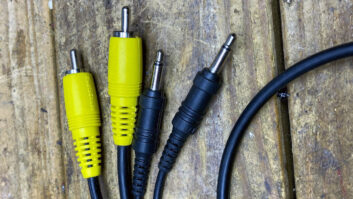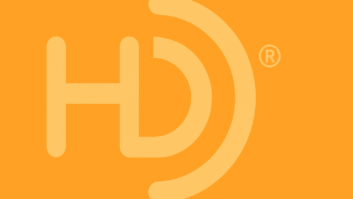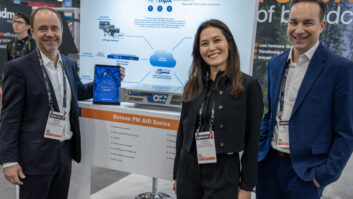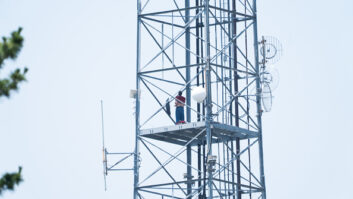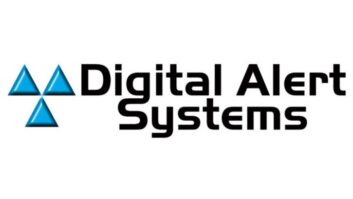IBOC Update – Nov 3, 2004
Nov 3, 2004 12:11 PM, By Mark Krieger, CBT
Stay up to date on the latest IBOC news, business and technology information with the twice-monthly newsletter from Radio magazine.

Index:
- CPB Announces Fresh Round of Digital Conversion Grants
- Italy’s DAB Progress Heralded at IBTS Conference
- Deutsche Welle’s Bettermann: DRM to Trigger “World-Wide Renaissance of Radio”
- Entercom Taps BE to Bring IBOC into Five Markets
- Enco Provides Support for 5.1, 7.1 Surround
- Canadian Broadcaster Teams with Radioscape to Develop Terrestrial Subscription DAB
- HD Radio Growing in The Garden State
- The language of HD Radio
To receive these articles twice a month in your e-mail, subscribe to the IBOC Update – Insight on HD Radio e-newsletter. Click here to subscribe.NewsCPB Announces Fresh Round of Digital Conversion Grants
On Oct. 20, the Corporation for Public Broadcasting (CPB) announced grants totaling more than $9 million to help an additional 133 local public radio stations purchase the equipment needed to transition to digital radio.This announcement marks the third round of grants earmarked for the advancement of digital radio broadcast technology in public radio stations. The transition to digital technology, particularly IBOC digital transmission, is expected to enhance the quality and scope of program services. CPB is encouraging and supporting the early adoption of this promising new technology by providing matching funds to eligible stations.With this announcement, CPB has awarded grants to 285 public radio stations and 170 public TV stations to begin their digital transition. Final grants are contingent on final equipment costs and contract negotiations with individual stations.These funds are part of the nearly $150 million in funding that Congress has provided to CPB during the last four years to assist public radio and public TV stations to convert from analog transmission to digital.Italy’s DAB Progress Heralded at IBTS Conference
DAB continues to grow around the world and Italy is no exception. At this year’s IBTS in Milan on Oct. 15, DAB got its due attention during a full day’s conference sponsored by U.K. Trade and Investment, the British Consulate General in Milan and the World DAB Forum.During the planned conference sessions, a panel of international speakers from Europe provided an overview of the rollout of DAB around the world, while an afternoon round-table discussion, chaired by the leading figures of Italy’s DAB consortia, considered opportunities for the country to establish its position within the ever-growing global DAB scenario.The speaker’s panel featured prominent names within the broadcasting industry, such as the BBC, chip manufacturer Texas Instruments, Radioscape and receiver manufacturer Pure Digital. DRDB, the association set up to promote the implementation of DAB in the UK, was also represented.Parallel to the conference, Italy’s EuroDAB consortium showcased the latest in DAB receivers at the exhibition. Currently, more than 70 types of products exists, with that number expected to rise to 150 by the end of this year. DAB radios are available on the market for as low as �70 and pause, rewind and record functionalities are already integrated into several products on the market.In Italy, commercial operators have expanded the DAB network, now reaching almost 65 percent of the Italian population, including major cities such as Milan, Rome, Bologna, Florence and Naples.Italy has been broadcasting DAB Digital Radio since 1997 when public broadcaster RAI began simulcasting its existing services. In 1998, eight commercial analog operators formed a consortium called Club DAB Italia to simulcast their own stations on their own digital multiplex. To date, Club DAB Italia, comprise nine licensed FM stations and is planning to resume its activity in 2004, extending coverage to the Rome and Milan areas.A further consortium of commercial broadcasters, EuroDAB, was formed in 1999, comprising national and local FM stations and simulcasting five commercial and three new digital-only services. EuroDAB has 23 transmitters in place across the country, and, through RTL 102.5, is also involved in the area of data transmission through DAB, being a leading partner within the EC-funded PRETIO project, which is working to implement DAB mobile data services.A third consortium, CRDAB, was set up this past summer, with a plan to launch services by end 2004 to cover Rome, Milan and three other major cities.Deutsche Welle’s Bettermann: DRM to Trigger “World-Wide Renaissance of Radio”
Digital transmission is nothing less than a catalyst for a global renaissance of radio, suggested a panel of European broadcasters attending Medientage M�nchen, an international broadcast conference held in Munich, Germany on Oct. 21.”Digital short-wave will revolutionize cross-border broadcasts” said Erik Bettermann, director general of Deutsche Welle, during a panel discussion entitled Digital Global Radio at M�nchner Medientage. But Bettermann, one of the events organizers, was not the only one to present an optimistic outlook, as other panel specialists, including Peter Senger, director of distribution at Deutsche Welle and chairman of the Digital Radio Mondiale (DRM), BBC representative Mike Cronk, Dan D’Aversa of RTL Group and Phil Laven of the European Broadcasting Union (EBU), emphasized the advantages of digitalization in the long, medium and short wave broadcast bands.In making his point, Senger pointed to worldwide acceptance of the DRM standard as a way to improve audio quality on narrow AM bandwidths in a way that makes them sonically competitive with FM broadcasts. He also noted that the days of searching for broadcast schedules and frequency assignments will become a thing of the past. Thanks to embedded station identification, automatic frequency selection allows optimized selection of any broadcasters signal, along with ancillary program information in the form of text messages.For several years, Deutsche Welle – like many other broadcasters – has experienced a migration of listeners from short-wave to FM or Eureka 147 DAB services,” said Deutsche Welle’s Bettermann. “[We have] to stay abreast of these changes.”The ability of digital transmissions to reach not only stationary receivers with substantial antenna systems, but also a new generation of vehicular and personal receivers was likewise highlighted. As a consequence, the real challenge for the DRM consortium is an orderly and successful implementation, according to Philip Laven of the European Broadcast Union (EBU). Laven elaborated by suggesting that while that the timetable for introduction of digital services in the AM bands would controlled by broadcasters, “the speed of the transition to digital will be set by consumers.”Dan D’Aversa assured the audience that his company, RTL Group, sees the chance to develop pan-European coverage and would work to ensure “that low-cost DRM receivers will be on sale in time for Christmas 2005.”Finally, Mike Cronk stated that the BBC had invested heavily in DRM and that they were now developing “a detailed strategy for initial deployment, probably into Europe, in 2005.”Bettermann also noted one more positive outcome of digital delivery over AM frequencies – the potential to reach an audience despite “political or other regulatory obstacles” – and announced that Deutsche Welle would gradually switch off its European service analog short-wave transmissions as DRM receivers become widely available to the public.Technology/ApplicationsEnco Provides Support for 5.1, 7.1 Surround
Enco Systems, an international provider of Digital Audio Delivery Systems, will provide integrated support for multichannel audio, configured as 5.1 or 7.1 surround sound, in the company’s Dadpro32 and Dadtv digital systems.A preview of Enco’s multichannel sound support was displayed at the SMPTE Technical Conference and Exhibition two weeks ago in Pasadena.Eugene Novacek, president of Enco Systems said, “Surround sound is here in the television space and it’s coming for HD Radio. We’re proud to be the first digital audio automation and playout system to support multichannel 5.1 and 7.1 sound. Our Dadtv clients have been asking for it, and we believe our radio clients will be asking for it soon.”Support for multichannel sound within Dadpro32 and Dadtv will be included in the products at no additional charge. According to the manufacturer, the 5.1 and 7.1 audio files are nearly identical to stereo or mono files in terms of appearance and manipulation, and are stored as single linear uncompressed files using standard interleaved WAV streams. While the new support may be applied to existing Dadpro32 and Dadtv systems, replacement of the audio card may be required. Multichannel support is expected to begin shipping in November, 2004.IBOC Across AmericaIBOC By State: New JerseyIbiquity has a list of stations that have licensed HD Radio technology and notes those that are on the air now. IBOC by State will look at various states and list the stations that are making the transition.
Station Format Market Owner On Air WCTC-AM 1450 Talk Middlesex-Somerset-Union Greater Media No WMGQ-FM 98.3 Rock AC Middlesex-Somerset-Union Greater Media No WWTR-AM 1170 Nostalgia Middlesex-Somerset-Union Greater Media No WJRZ-FM 100.1 Oldies Monmouth-Ocean Greater Media No WRAT-FM 95.9 AOR/ClRck Monmouth-Ocean Greater Media No WDHA-FM 105.5 AOR Morristown Greater Media Yes WMTR-AM 1250 Nostalgia Morristown Greater Media No WWFM-FM 89.1 Classical Trenton Mercer County Community College NoEye on IBOCEntercom Taps BE to Bring IBOC into Five Markets
Entercom Communications recently announced that it has ordered 14 HD Radio transmission systems to expand its use of IBOC digital technology into five markets where its properties are currently equipped with FM analog. The new systems, supplied by Broadcast Electronics, will bring the total number of Entercom’s HD Radio-equipped stations to 21, spanning seven markets across the United States.The recent purchases include transmitters for five stations in Portland; five in Kansas City; two in Indianapolis; and two in Denver. Entercom’s Seattle stations were among the first in the country to install BE HD Radio equipped transmitters, and one Entercom station in Boston has had an IBOC hybrid digital on the air since December 2002.The installations are being configured with high-level combined or space-combined (separate antenna) systems, depending on the circumstances at each facility. Entercom currently owns 58 FM and 28 AM stations nationwide.Canadian Broadcaster Teams with Radioscape to Develop Terrestrial Subscription DAB
CHUM, owner and operator of 32 radio stations and eight local TV stations, has signed an agreement with UK-based Radioscape to develop a digital radio receiver for its proposed CHUM Subscription Radio Canada (CSRC). CHUM’s application for a broadcasting license for a national multi-channel terrestrial subscription radio system is currently before the Canadian Radio Television Commission (CRTC).Under the terms of the agreement, CHUM and Radioscape will work together to specify the digital radio receiver and broadcast infrastructure solutions needed to deploy subscription radio services. If a license is granted to CHUM, Radioscape will supply broadcasting and receiving technology and equipment to be used by CSRC.”CSRC will deliver the best possible content while promoting and supporting the Canadian music industry,” said Paul Ski, executive vice president radio, CHUM.”Our expertise in Software Defined Radio solutions for receivers and broadcast infrastructure (allows) new capabilities that exploit the power and success of radio’s evolution into the digital domain,” said John Hall, CEO of Radioscape.CHUM filed its application for CSRC to the CRTC in February 2004. If approved, CSRC, a Canadian owned, controlled and operated terrestrial-based subscription radio service, will deliver 50 to 100 channels of unique content, all with CRTC prescribed levels of Canadian content, for a monthly fee of $9.95.The channels will feature a diverse mix of programming developed by and for Canadian audiences, where Canadian artists feature prominently. Channels will include contemporary and niche music formats, francophone, multilingual and ethnic programming, and content from around the world.HD Radio Terminology The Language of HD Radiosoftware defined radio (SDR): A radio whose channel modulation waveforms are defined in software, rather than in fixed circuitry. On the transmitter side, waveforms are generated as sampled digital signals, then converted to analog via wideband DAC before being upconverted to the appropriate transmission frequency for amplification and transmission. Conversely, receivers employ a wideband ADC that captures all of the channels available to the software radio “node.” The receiver then extracts, downconverts and demodulates the desired channel waveform via software running on a general-purpose processor.The advantage of SDR architecture is that radio hardware platforms themselves don’t need to be modified or replaced to accommodate changes in channelization, coding or modulation schemes.

